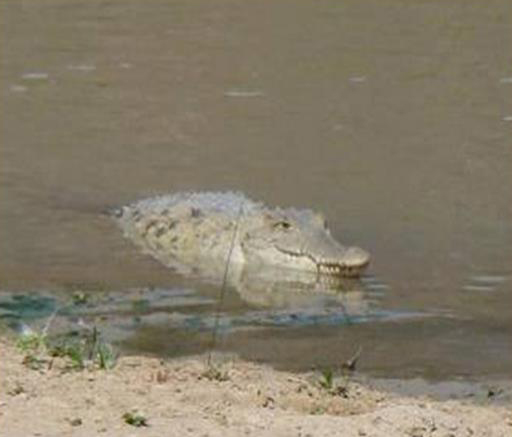American Crocodile
Species Data
Class: Reptilia
Order: Crocodylia
Family: Crocodylidae
Scientific Name: Crocodylus acutus
IUCN Red List status: Vulnerable
Description
Once considered endangered, this widespread species of marine reptile has been making a recovery in recent years. Found from Florida, through Mexico and Central America to as far south as Ecuador and as far east as the Caribbean. This species is well adapted to life in saline water, even living in hypersaline lakes, but also lives in freshwater systems. A large species, males can be over 6 meters in length.
(Header image: American Crocodile ©Tomás Castelazo.CC license 2.5, 2.0 and 1.0.)
Behaviour
Females tend to lay their eggs on ridges on the shore of brackish lagoons, the lagoons providing a nursery environment for their young. They create mounds on the shore and lay a clutch of between 30 and 60 eggs during the dry season.
Like most crocodiles, American Crocodile will eat both aquatic prey items including fish and crabs as well as ambush some land-based animals such as goats.
Some American Crocodile have been seen using cleaner fish to remove parasites.


Habitat
American Crocodile can be found in a huge range of saline and freshwater systems. Unlike many species, they are not perturbed by the presence of human habitation and will nest near urbanised areas. This is though to be a major driver of their recovery, as they will be less disturbed by other organisms in these areas. They are very susceptible to cold weather.
Threats and Conservation
Once hunted extensively for their hides, American Crocodile has been protected since the 1970s. It is now threatened by a loss of nesting grounds, the loss of hatching young and eggs from various predators and overfishing within much of their range.
